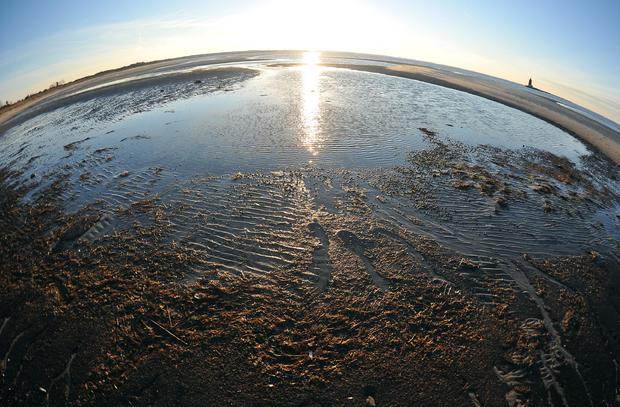A dangerous flesh-eating bacteria may be on the rise at some popular East Coast beaches due to warming water temperatures. In the past two years, five cases of Vibrio vulnificus, a flesh-eating bacterial infection that is spread by handling or eating contaminated seafood, have been linked to Delaware Bay, according to a study.
Vibrio vulnificus usually occurs in high-salinity, brackish waters with surface temperatures above 13 degrees Celsius, or 55 degrees Fahrenheit, the study says. It has typically been found in the warm waters of the Gulf Coast and southern states like Louisiana and Texas, especially during the months from May to October.
Vibrio vulnificus causes about 205 infections in the United States every year the CDC estimates. The CDC also says it is important to learn more about the harmful bacteria if you live in areas where hurricanes, storm surges and coastal flooding are possible. The most common cause of infection is eating raw or undercooked selfish, particularly oysters.
Trending News
The bacteria is endemic along the southeastern U.S. coast, but has also been found in the Chesapeake Bay, according to the study, published Monday in the journal Annals of Internal Medicine. The illness rarely occurs in the cooler waters of the Delaware Bay and Jersey Shore, but the researchers say it is becoming more frequent due to climate change.
The five patients infected in Delaware were all treated at Cooper University Hospital in Camden, New Jersey over the last two years. Before that, the hospital had seen only one case of severe Vibrio infection in eight years, Dr. Katherine Doktor, an infectious disease specialist at Cooper University Health Care, told CBS Philly.
These cases serve as a warning that flesh-destroying bacterial infections are now occurring outside the traditional geographic boundaries, the authors of the study said. One of the five patients died.
“It is important for physicians — who may have never seen this infection before in their medical practice — to have some awareness,” Doktor, a co-author of the study, said.
The study notes that the past three decades have seen a significant increase in sea surface temperatures in many areas of the United States, resulting in “longer summer seasons and … alterations in the quantity, distribution, and seasonal windows of bacteria” in the coastal ecosystem, providing “more favorable conditions for Vibrio.”
“While the infection is still rare, it is being seen with more frequency in this region,” Doktor explained.
The five Delaware patients experienced a number of different symptoms after becoming infected. A 38-year-old man experienced vomiting, a fever and a skin rash on his left calf. His blood cultures confirmed a Vibrio infection, although it was already evident by his dying skin, the study says. He had not been near Delaware Bay, but it is believed he became infected while working at a New Jersey restaurant that served seafood from the bay.
A 46-year-old man became infected after going crabbing in Delaware Bay. A 60-year-old man had done the same, and became infected after making a meal of a dozen crabs. A 64-year-old man became infected after cutting his leg on crab trap in the Delaware Bay.
Another 64-year-old man became infected after cleaning Delaware Bay crabs with his hands. He ultimately died.
“In all the cases we’ve seen, the patients have had known risk factors (liver disease, diabetes, or other immune compromise) when a break in the skin was exposed to water and/or [when the patient] consumed uncooked shellfish harvested from the Delaware Bay,” Doktor wrote in an email, according CBS Philly.
“Anyone with cuts, sores or broken skin or with immunocompromised conditions who notice changes or the appearance of infection after spending time in the water (particularly brackish waters) should seek medical attention promptly as early medical (intervention) is key to the best outcomes,” the doctor said.



